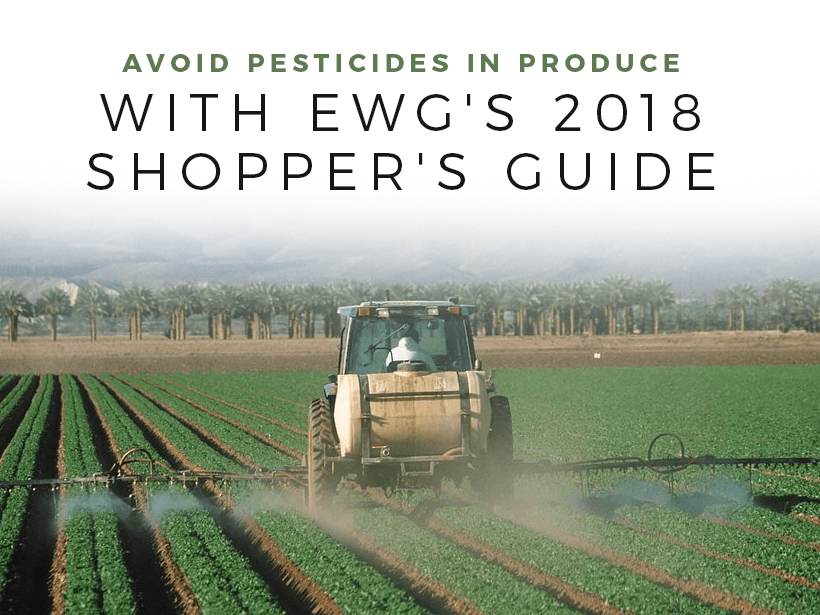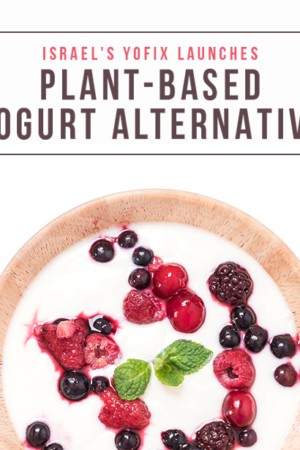The Environmental Working Group’s (EWG) 2018 Shopper’s Guide to Pesticides in Produce™1 was recently released to help consumers minimize and avoid unwanted toxic pesticides in produce. By the time we reach adulthood, it’s been ingrained in us that both adults and children should eat more fruits and vegetables, regardless of whether we choose organic or conventionally-grown produce. However, many shoppers don’t realize the amount or extent of pesticides in such produce, and The Shopper’s Guide is designed to help us navigate these tricky waters.
Tests Show Dramatic Levels of Pesticides in Produce
This year’s Shopper’s Guide shares some dramatic results from tests, as well as what consumers should search for and avoid while seeking clean produce. For example, studies indicated that more than a third of all strawberry samples analyzed in 2016 contained at least 10 pesticide residues. Furthermore, more than 98 percent–an alarming number–of strawberry, peach, potato, cherry, and apple samples tested positive for at least one pesticide.
Gone are the days of simply selecting produce and assuming they are entirely safe for consumption. Sonya Lunder, senior analyst with EWG, says, “It is vitally important that everyone eats plenty of produce, but it is also wise to avoid dietary exposure to toxic pesticides, from conception through childhood.”
Let The Shopper’s Guide Steer You Clear of the Bad
Your 2018 Shopper’s Guide lists the Dirty Dozen™2 fruits and vegetables, which contain the most concentrated pesticide residues. However, it also lists the Clean Fifteen™3, which revealed the fewest number of pesticides. Studies showed that avocados and sweet corn were some of the cleanest varieties of produce, and more than 80 percent of cabbages, papayas, onions, and asparagus had no pesticide residues. Equally important to note is that no fruits listed in the Clean Fifteen tested positive for more than four pesticides.
The Shopper’s Guide is designed to be a tool all households can use and access daily. By making more informed decisions while shopping for produce, we can work to avoid potential fertility issues, neurotoxicity, and more.
Eating Healthy Means Making Better Choices
Eating clean starts with making informed decisions about the produce we put on our tables and in our bodies. Ms. Lunder states, “With EWG’s guide, consumers can fill their fridges and fruit bowls with plenty of healthy conventional and organic produce that isn’t contaminated with multiple pesticide residues.” She urges consumers to read through The Shopper’s Guide thoroughly, regardless of whether they buy conventional or organic produce.
NUTRITIONAL DISCLAIMER
The content on this website should not be taken as medical advice and you should ALWAYS consult with your doctor before starting any diet or exercise program. We provide nutritional data for our recipes as a courtesy to our readers. We use Total Keto Diet app software to calculate the nutrition and we remove fiber and sugar alcohols, like erythritol, from the total carbohydrate count to get to the net carb count, as they do not affect your blood glucose levels. You should independently calculate nutritional information on your own and not rely on our data. The website or content herein is not intended to cure, prevent, diagnose or treat any disease. This website shall not be liable for adverse reactions or any other outcome resulting from the use of recipes or recommendations on the Website or actions you take as a result. Any action you take is strictly at your own risk.
- The Hidden Dangers of the HCG Diet - January 30, 2019
- Avoiding Constipation on the Keto Diet - January 28, 2019
- Upping Fat or Cutting Carbs for Ketosis? - January 23, 2019




